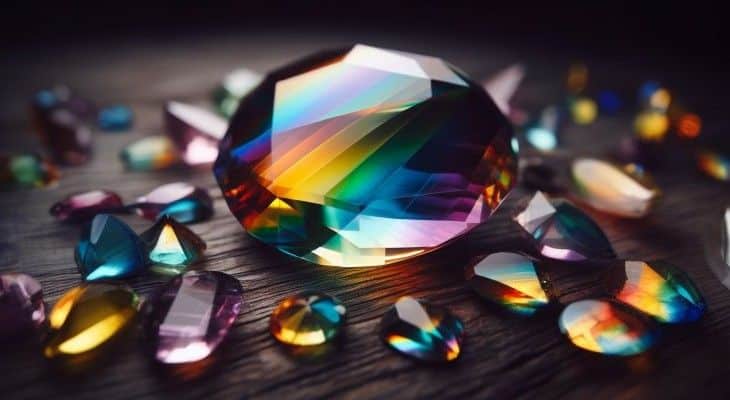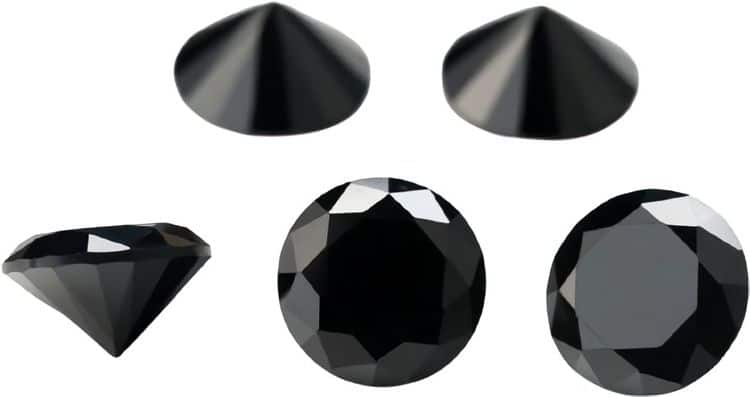Looking for a fun, inexpensive way to turn ordinary rocks into dazzling gemstone creations? Polishing rocks using walnut shells is an easy hobby that produces stunning results. Unlike harsh abrasives that can damage stones, walnut shells are a gentle media that smoothly polish rough edges and imperfections. And you can do it all with supplies readily available at your local craft store.
The process is surprisingly simple. Just add water, rocks, and walnut shells to a tumbler machine. Turn it on and let physics go to work! The tumbling action softly grinds the shells against the rocks over time, revealing their inner beauty. While a cycle can take weeks, the anticipation of seeing that final sparkling finish is part of the excitement.
Best of all, polished rocks make amazing gifts and home decor. With a bag of walnut shells, a tumbler, and some rocks, you can create jewelry, paperweights, decorative landscaping features, and more. Express your creativity while discovering the satisfaction of transforming raw stones into dazzling gems. Read on to learn the steps for success and helpful tips to get started on this enjoyable hobby today!
Benefits of using walnut shells for polishing rocks
There are many benefits of using walnut shells for polishing rocks:
- It is a very gentle abrasive that will not damage your rocks.
- It is a natural product that is biodegradable and non-toxic.
- It is very inexpensive and easy to find.
Finally, it works well on a variety of different rocks and minerals.
How to polish rocks with walnut shells
Now that we’ve discussed the benefits of using walnut shells for polishing rocks, let’s go over the steps involved in doing this activity.
The first step is to gather your supplies. You will need:
- Walnut shells
- A rock tumbler or a polishing machine
- Rocks that you want to polish
- Water
Next, you will need to add the walnut shells and rocks to the tumbler or polishing machine. Be sure to add enough water so that all of the rocks are covered. Then, turn on the machine and let it run for the recommended amount of time.
Once the cycle is complete, remove the rocks and rinse them off with water. You may need to repeat this process a few times to get the desired results.
Finally, enjoy your shiny and beautiful polished rocks!
Tumbling and Polishing with Walnut Shells
Walnut shell is a popular media used for tumbling and polishing rocks. Here are some tips when using walnut shells:
- Invest in a quality tumbler machine. Both vibrating and rotary tumblers work well. I started with a small 2 lb rotary tumbler from my local rock shed.
- Use walnut shell in stages – start with a coarse grit to smooth and round sharp edges. Then follow up with finer grits to polish.
- Add a polishing compound like red rouge in the final stage for an extra sparkly finish.
- Walnut shell can also remove tarnish and polish jewelry. I use a brass jewelry cartridge with walnut shell in my tumbler to clean rings and pendants. It makes them look brand new!
- Buy walnut shell grit in 2 lb or 5 lb bags. A little goes a long way.
- Handle tumblers with care. The vibrating action can cause noise and walk across the table! I put my small tumbler inside a box lined with foam to reduce noise and movement while tumbling.
Understanding the Grit Levels of Walnut Shells
When it comes to walnut shell grit for rock tumbling, it’s important to understand that this tumbling media comes in various grades, or sizes. The size of the walnut shell particles can play a major role in the finish you’ll achieve. The ‘grit’ refers to the coarseness of the walnut shell media.
You’ll often find the terms coarse, medium, and fine used to describe the size of the ground walnut shell particles.
- Coarse Walnut Shell: This is the roughest form of crushed walnut shells. Coarse walnut shell grit is typically used in the first stage of the rock tumbling process. It’s extremely durable and works well in removing the surface imperfections and rounding the sharp edges of the stones.
- Medium Walnut Shell: This grade of walnut media is less coarse but still provides enough abrasiveness for the second stage of the tumbling process. It helps to smooth the stone further and prepares it for the final polish.
- Fine Walnut Shell: This is the finest form of crushed walnut shells and is used in the final polish stage of rock tumbling. Fine walnut shell grit works by polishing the surface of the stone without scratching or marring it, giving the rock a shiny, smooth finish.
You can typically purchase untreated and treated walnut shell grit. Treated walnut shell grit usually contains a red rouge (iron oxide) coating which helps to further clean and polish the surface of the stone.
Below is a comparison table of different walnut shell grit levels:
| Type | Description | Uses |
|---|---|---|
| Coarse Walnut Shell | Rough, large particles | First stage of tumbling, removes surface imperfections |
| Medium Walnut Shell | Less coarse, medium-sized particles | Second stage of tumbling, smoothes the stone |
| Fine Walnut Shell | Small, fine particles | Final polish stage, gives the stone a shiny finish |
These products can be easily found on sites like Amazon.com.
The Science Behind the Tumbling Process
At its core, the rock tumbling process is a lesson in physics. The rotary tumbler uses a barrel, often filled with walnut shell media and water, to tumble the rocks. The tumbling action grinds the rocks against the walnut media, smoothing and polishing their surface over time.
In a rotary tumbler, the rocks and walnut shell media are placed in a barrel which is then rotated. The continuous rotation causes the rocks to tumble within the barrel, rubbing against the crushed walnut shell grit. The friction caused by this tumbling action helps to grind down the sharp edges and rough surfaces of the rocks.
Vibratory tumblers, on the other hand, vibrate, causing the rocks and tumbling media to move in a rapid, shaking motion. This type of tumbler can process rocks much quicker than a rotary tumbler, but they tend to be more expensive.
Each type of tumbler (rotary or vibratory) works well with walnut media, but the time of finishing and the degree of polishing might vary. No matter which type of tumbler you have, it’s important to check your rocks and media periodically, adding more walnut shells as needed.
Just like an engine that keeps your car moving, the tumbler is the engine that drives the tumbling process. The size of the tumbler, usually measured in lbs, refers to the maximum weight it can handle. A 3 lbs tumbler, for instance, can handle up to 3 lbs of rocks and media.
While the walnut media can be used multiple times, it does break down over time. Once you notice the media losing its effectiveness, simply add more to the tumbler. A good rule of thumb is to use about 1 lb of walnut shells for a 3 lbs rock tumbler.
Remember, polishing rocks is more than just a fun hobby—it’s a fascinating look into the world of geology and physics. If you’re a lapidary enthusiast or just got a new rock tumbler and are eager to start tumbling, give walnut shell media a try. As always, if you have any questions or need additional information, please let us know. Happy tumbling!
How Long Does Walnut Shell Media Last?
Walnut shell media is a natural product that will break down over time. Depending on how often you use it, your walnut shell media may last for several months or even years. If you notice that the media is starting to break down, simply add more to the tumbler or polishing machine.
Alternative to Walnut Shells
If you can’t find walnut shells or you’re looking for an alternative, you can also use corn cobs. Corn cobs are a gentle abrasive that will not damage your rocks. They are also a natural product that is biodegradable and non-toxic. However, they may be more expensive than walnut shells.
Tips and tricks
Here are a few tips and tricks for polishing rocks with walnut shells:
- If you’re having trouble finding walnut shells, you can usually find them at pet stores. They are often used as bedding for small animals.
- You can also use a coffee grinder to break up the shells into smaller pieces. This will help them fit into the tumbler or polishing machine more easily.
- If you’re using a rock tumbler, be sure to add a few drops of dish soap to the water. This will help the rocks move around more easily and prevent them from getting stuck.
- Finally, be patient! It may take several cycles to get the desired results.
FAQs
Can I use other types of abrasives to polish my rocks?
Yes, you can use other types of abrasives, such as sandpaper or steel wool. However, these materials may damage your rocks. If you're looking for a gentle abrasive that won't damage your rocks, we recommend using walnut shells.
Can I use corn cobs instead of walnut shells?
Yes, you can use corn cobs as an alternative to walnut shells. Corn cobs are a gentle abrasive that will not damage your rocks. However, they may be more expensive than walnut shells.
How long does walnut shell media last?
Walnut shell media is a natural product that will break down over time. Depending on how often you use it, your walnut shell media may last for several months or even years. If you notice that the media is starting to break down, simply add more to the tumbler or polishing machine.
I'm having trouble finding walnut shells. Where can I buy them?
Walnut shells can usually be found at pet stores. They are often used as bedding for small animals. You can also find them online or at some hardware stores. If you're having trouble finding them, you can also use corn cobs as an alternative.
What is the best way to clean my rocks after polishing them?
The best way to clean your rocks is to rinse them off with water. You may need to repeat this process a few times to remove all of the walnut shells. Once you're finished, enjoy your shiny and beautiful polished rocks!
I'm having trouble getting the desired results. What should I do?
Be patient! It may take several cycles to get the desired results. If you're using a rock tumbler, be sure to add a few drops of dish soap to the water. This will help the rocks move around more easily and prevent them from getting stuck. You can also try using a coffee grinder to break up the shells into smaller pieces. This will help them fit into the tumbler or polishing machine more easily.
Final Thoughts
Walnut shells have been used as a polishing media for years, and there are two main types on the market today. Try them yourself before buying any so that you can see how they work. You’ll likely find their results impressive enough to use them over and over again.




Interested in polishing Petosky stones, ons other beach finds. What type of tumbler or procedure would you recommend? Thanks
Hi, Maggie.
There are a few different ways that you can go about polishing Petosky stones. One popular method is to use a rock tumbler with grits, using ever-finer grades until you achieve the desired finish. You can also use a rotary tool with a felt polishing tip, moving it in small, circular motions until the stone is shiny. Whichever method you choose, be sure to work slowly and carefully to avoid damaging the surface of the stone.
John, just received a 3lb rotary rock tumbler with walnut shells. How much walnut shell do you use in the tumbler? Do you add water or anything else to it? Please let me know. Thanks
Hi, Gayle.
You would use about 1 lb of walnut shells for a 3 lbs rock tumbler. You don’t need to add water or anything else to it. The shells will act as a grit and will help polish the rocks.
Hi John. I just got a new rock tumbler that came with walnut shells. If I am using the 4 step method to tumbling which stage do I use the walnut shells? Thanks.
Hi, Gayle.
The walnut shells are typically used in the second stage of the four-step tumbling process, known as the pre-polish stage. In this stage, the abrasive material (in this case, the walnut shells) helps to smooth and shape the rough edges of the rocks, preparing them for the final polish stage.
Thank you!!!
Hi Can I use small pieces of wool or felt in the 2 final stages to help polish my rocks to a super shine ..
Hi! I would suggest exploring alternatives to small pieces of wool or felt for achieving a super shine on your rocks. While they can be effective for certain tasks, they may not provide the necessary abrasiveness. Instead, consider using microfiber cloth or specialized polishing pads designed for lapidary work in the final stages. These materials are known for their fine abrasive properties and can help remove remaining imperfections, resulting in a stunning mirror-like polish. Striking the right balance between gentleness and effectiveness is key. Happy rock polishing!
I have a 25 pound rock tumbler and polishing creek rocks. I am thinking of ordering some walnut shells to use. If i’m reading right I do not have to add water and would need to use about 6-7 pounds of walnut shells?
Hello Angelia! You’re on the right track. Walnut shells are indeed used as a polishing medium, especially for softer stones or for achieving a softer finish on harder rocks. For your 25-pound rock tumbler, using 6-7 pounds of walnut shells is a good estimate. It’s true that, unlike other tumbling grits, you don’t necessarily need to add water when using walnut shells. However, it might be beneficial to add a small amount of polishing compound to the shells to achieve an even shinier finish. Ensure your tumbler is not overfilled and that there’s enough space for the rocks to move freely. Happy tumbling!